6 trees that every survivalist should know
Trees are your lifesavers in survival situations It is advisable to take a close look at some trees to make tea, glue, tinder, or salad.
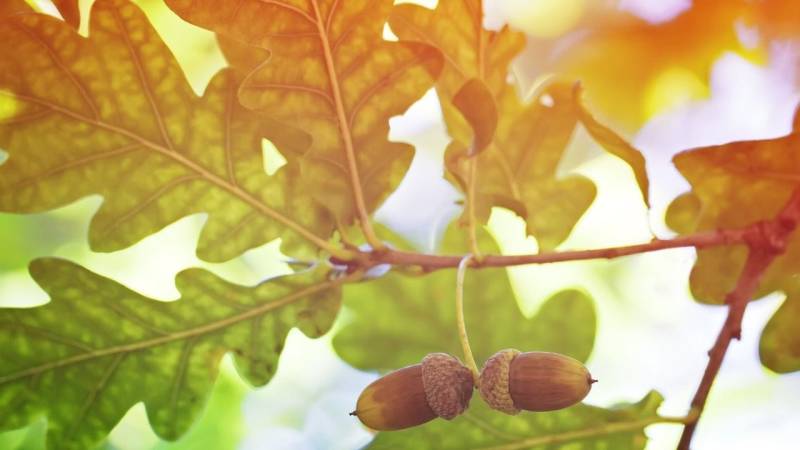

From Martin Gebhardt. Check out my “About me” page.
👉 The key facts from this guide
- Know the tree species in your region to use them for survival purposes.
- Willow: Pain relief, bow drilling, ropes and lichens.
- Oak: Edible acorns, firewood, healing properties and trap bait.
- Birch: Drinkable sap, containers, tinder and edible cambium.
- Maple: Edible young leaves, drinkable sap, cooking tools and edible seeds.
- Pine: Resin as fire accelerant, natural glue, tea from needles and edible parts.
- Linden: Edible leaves and flowers, linden flower tea, natural cordage and carvings.
Trees are an important resource for survivalists.
If you know the tree species that can be found in your region, you can use them to help you survive.
Knowing which trees are safe, edible, and medicinal can be a difficult task as there are so many to choose from.
With my guide, however, you can learn how to use trees for survival, so you are never caught unprepared.
This guide to six trees that every survivalist should know will show you how to make your own tea, tinder, and even glue without having to carry a lot of supplies with you.
The willow – the tree for weaving
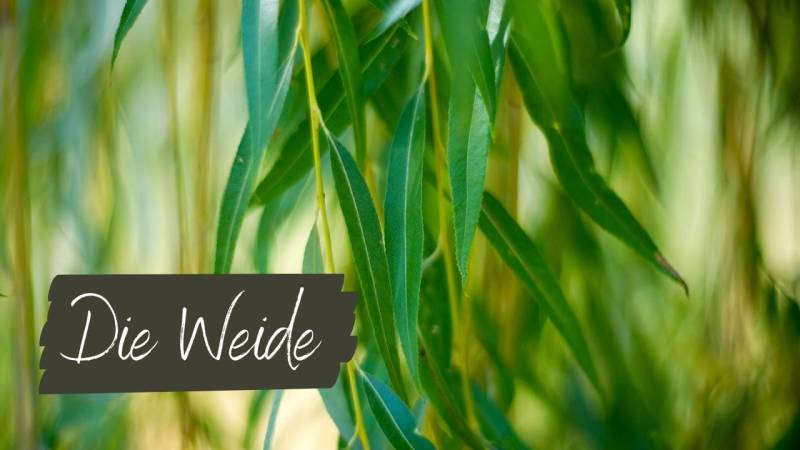
There are incredibly many types of willow, but they all have one thing in common: similar leaf shape.
All the leaves are narrow and long (like a lance) and grow in large numbers along the branches. The willow prefers to grow in wet areas because that's where it can become old and strong. It is, therefore, a good indicator of a water source (Read my water guide here).
The willow is useful for:
- Willow bark contains the substance salicin (for more information on this, see Wikipedia), which has pain-relieving effects similar to aspirin. It is particularly useful for headaches and inflammation. Chew on a few small green branches and swallow the juice.
- The wood of the willow is good for fire starting by friction.
- You can make ropes from willow bark (here is a guide by me). This works best in spring and summer when the willow sheds its bark.
- You can make baskets with the young branches and twigs of the willow. You can weave all kinds of things with them, such as traps for fish (a funnel) or small animals.
If you are staying in one place for a while, you can also plant willow and use it for the following:
- Willow is flexible and can be grown as a fence. You just have to prune it regularly.
- You can build a shelter out of willow. This takes time because the willow has to grow. Just bend it into the right position regularly, and after several years, a willow pavilion will be waiting for you.
Oak – Poisonous and yet edible
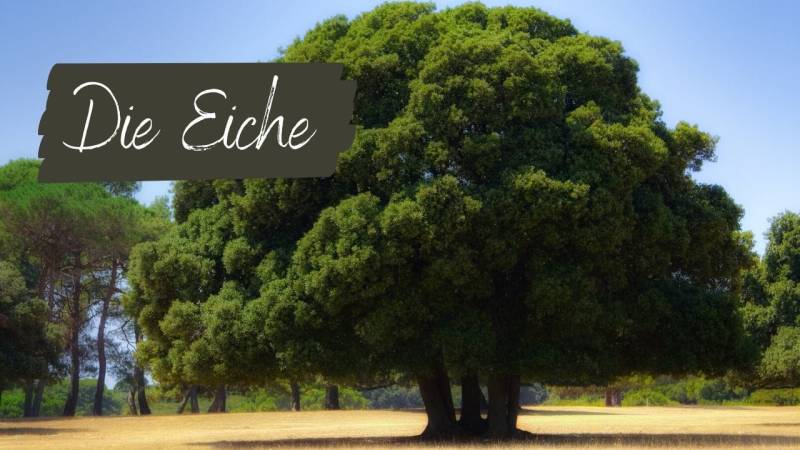
Oaks can be found throughout Germany with around 600 different species. You can recognize them by their leaves (rounded leaf tips) and their fruits, the acorns. As a survivalist, you can process and use the wood, bark, and fruits. The most common types of oak in Europe are the pedunculate oak, the sessile oak, and the red oak.
One more thing to note: oak contains a high concentration of tannins. All parts of the oak are toxic, but not life-threatening. The tannins (used for tanning) and aldehydes in oak wood can cause allergic reactions (rhinitis, asthma) when inhaled. Therefore, you must thoroughly wash and soak all parts of the oak. Only when the water no longer colors are the parts usable.
Here are some ways you can use oak:
- From acorns, you can make flour (or coffee substitute) which contains many proteins and carbohydrates. Wash the acorns thoroughly to remove tannins (too much of it tastes bitter). Then dry the acorns over a fire, grind them into flour, and bake your acorn bread.
- Acorns can be used as bait for traps when hunting squirrels and other small wild animals.
- The oak wood is very hard, you can use it for axe handles, digging sticks, and for building your shelter (read here how to build a shelter).
- As firewood, the oak is very popular. It may be difficult to start but it burns long and hot. The oak's embers are very hot and last a long time.
- Young leaves and flowers that have just emerged from buds contain less tannin and can be eaten.
- Oak bark tea (dried and powdered oak bark) has healing effects (e.g. for digestive problems).
- A fresh oak bark poultice can relieve eczema and other skin irritations.
The Birch – Juicy and a Tinder Miracle
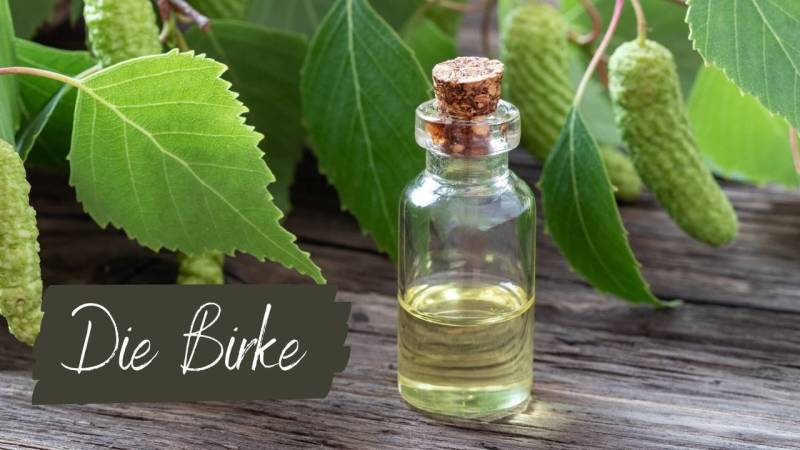
You're probably familiar with the birch: when young, its trunk has white bark making it easily recognizable. Sometimes the bark is papery and easy to peel off.
In the wilderness, the birch can be helpful for:
- In spring, its sap is drinkable. You don't have to purify it and can obtain it by tapping the bark. The slightly sweet sap will gradually drip out.
- You can make containers from birch bark. Cans for matches (here's my tutorial article about it), cooking vessels, and even canoes.
- Birch bark contains essential oils and therefore burns particularly well (even when it's slightly damp). This means you can use it as tinder (find 22 examples for tinder here).
- You can make tea from the young leaves and branches.
- You can eat the cambium, the inner layer of birch bark.
- The tinder fungus / birch polypore almost exclusively grows on the birch. For centuries, birch polypore has been used as tinder and you can even make tea from it. Read my full article on tinder fungus here.
- You can make birch tar from the bark, which is an excellent natural adhesive.
You can learn more about birch in my article "Birch Bark: The Survival Wonder [Examples of Use]".
Maple – Sap and Seeds for Foodies
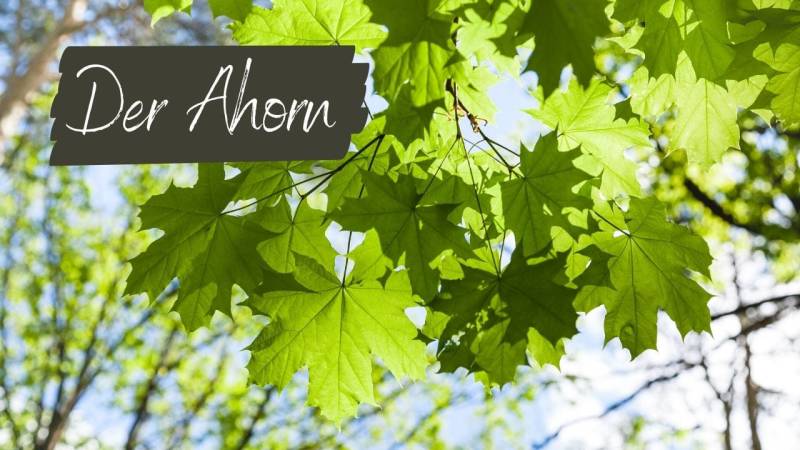
The maple tree is particularly adorned with its red, orange, and yellow leaves in the fall. A maple leaf is easy to recognize, and the unmistakable seeds on the ground reveal to every forest ranger that they are standing under a maple tree.
In Canada, the sugar maple is well-known because it is used to produce maple syrup. Unfortunately, the sugar maple is not widespread in Germany, so we are unable to collect syrup from it.
The sugar maple is mainly found throughout much of the eastern part of North America, from Canada to the southern United States. Even the black sugar maple can be used to collect sap, and we occasionally encounter the tree in Europe.
The maple tree is useful for survival situations:
- You can eat young maple leaves. While not very nutritious, they are sufficient for a "wilderness salad." As the leaves age, they become bitter.
- In the spring, shortly after winter, sap also flows into the tips of maple trees. This sap is immediately drinkable. Maple sap is full of energy because it contains a lot of sugar. On good days, I have filled a 1-liter bottle after only 15 to 30 minutes.
- The branches, twigs, and leaves can be used as cooking tools, for example as a skewer for your Stick Bread (Find my perfect stick bread recipe here with and without yeast). The leaves are sometimes very large, and you can use them to wrap your meat or fish to cook your food.
- The seeds of the maple tree can be eaten. Remove the thin leaves from the seed and cook or fry the seed for a few minutes. Add a little salt, and they are tasty. Or use the seeds for a stew as a kind of "small beans."
Read also
The Liquid Gold of Trees: 16 Trees You Can Tap for Syrup - Syrup from nature - doesn't that sound tempting? In this guide, you'll learn how to obtain valuable and delicious syrup from 16 different trees.
The Pine - Tinder, Glue, Tea

The pine is a coniferous tree and is mainly found in the north of Germany. You can quickly recognize a pine by its needles. because only the pine has two or more needles at the base of the needle.
The following is useful for you about the pine:
- Use pine resin as a fire accelerant and fire starter. Read more about resin here.
- Pine trees have resinous spots on their bark and roots, which you can use to make kienspan (my favorite tinder).
- Heat up the resin and mix it with charcoal powder to create a natural adhesive that can be cooled and transported for extended periods.
- You can brew tea (rich in vitamin C) with the pine needles.
- You can eat several parts of the pine tree, including the seeds, flowers, and inner bark layer.
- Pine is an excellent construction and building material for bushcrafters.
- Pine branches can be used to insulate your sleeping area and cover your shelter. (Read more about building a bushcraft shelter.)
- Pine wood ignites quickly and creates short-lived and mild heat.
- Strong, fresh pine roots are an excellent source of rope.
Recommended reading: How to identify 5 common pine trees by their needles
Linden Trees – For Ropes, Tea, and Carvings

The lime tree prefers moist soil and can often be found near streams and ponds. I find the leaves particularly striking: they are large, heart-shaped, and have a roughly toothed edge. But the most notable feature is the tongue-shaped leaf that grows at the base of the heart-shaped leaves, where the fruits form: small nut-like balls (flower colors yellow, orange, and white).
In Europe, almost only the small-leaved lime (Tilia cordata) and the large-leaved lime (Tilia platyphyllos) occur. The trees can live up to 1000 years old.
The lime tree can be used for the following in survival situations:
- The leaves and flowers are edible, especially in spring. Add them to salads or snack on them for an energy boost.
- The inner layer of the bark is sweet and can be eaten – scrape it off with your knife.
- You can make a Linden flower tea from the flowers to help with colds or to boost your immune system.
- The inner fibers of the lime tree make some of the best natural ropes in the world.
- The wood of the lime tree is soft and therefore suitable for bow drilling.
- Since the wood is soft, it's easy to carve your own spoons or other tools. It's great for beginners to carve with. Here I show you how to start carving a wooden spoon.
If you're looking for more edible plants, be sure to read my article "Edible Plants: Find These Emergency Foods in the Forest (List + Pictures)".
Do you have more to add to the listed trees? Bring it on and write it in the comments.


Author of the guide
Martin Gebhardt
Hey, I'm Martin. On my blog, you will learn the basics and numerous details about living in the wild. I think survival, bushcraft and the good life in nature are the keys to happiness. Find me here on Instagram or on YouTube. You can find more about my mission on the About Me page.
Was this guide helpful?
40 people found this guide helpful.
5.00 out of 5 points (40 Ratings)
Comments (0)
This post may contain affiliate links. So if you click on the links and make a purchase, I will receive a small commission at no additional cost to you. Click here, to learn more about it.



